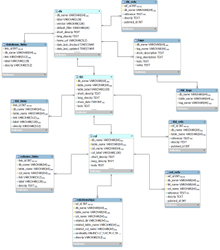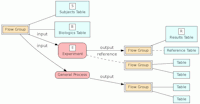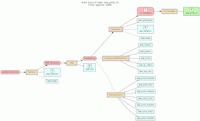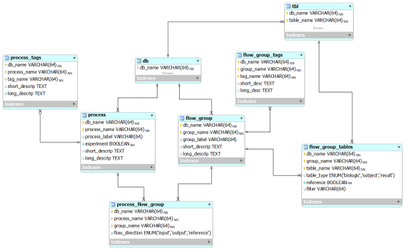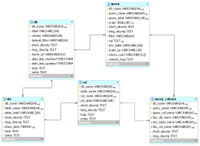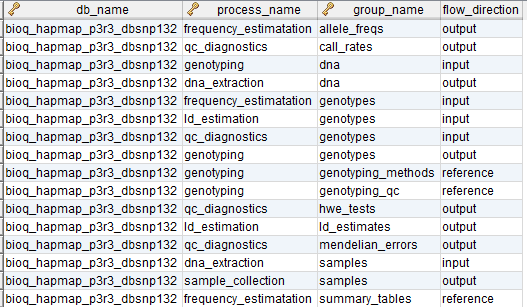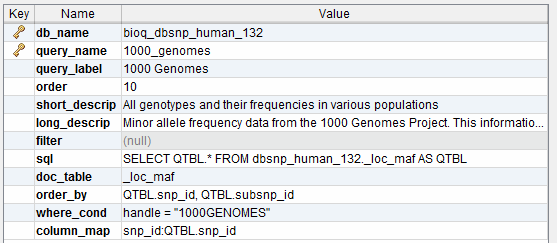The BioQ web application uses several relational database models to provide documentation and query tools for the various genomic databases. All schemas and ER diagrams can be found in the MySQL Workbench document on our Subversion server.
Contents
| Table of Contents | ||
|---|---|---|
|
The core relational model
This entity-relationship (ER) diagram shows the core relational model for our database documentation (from subversion revision 70).
The biologic-experiment-result (BERT) relational model
Our BERT relational model is designed to document a genomic database by tracing the experimental source of the data. The key entities in the models are the biologics, the experiments and the experimental results as illustrated in the following diagram.
In the model, the tables in a relational database are grouped into flow groups that can input, output or reference material for the various experiments and processes that determined the data. Here is an example from our BioQ web application of the BERT model being applied to linkage disequilibrium (LD) data from the HapMap database. In BioQ, the diagram is interactive and can be used to navigate documentation and query the actual data.
The following ER diagram shows the relational database implementation of the BERT model (from subversion revision 70, see the MySQL Workbench file ).
The queries model
This is our model for storing queries in the documentation database. This information is used to populate the BioQ queries for each database.
...
This is our model for querying genomic features such as genomic regions, gene transcripts, SNPs and other genetic variants. The way features are specified may depend on the database. For example, genes have different IDs in the NCBI, HUGO and Ensembl databases.
Tables
db, tbl and col
These provide descriptions of database, tables and columns, respectively, in the BioQ genomic databases.
...
In the BERT model, a flow group is a group of tables that can be input or output for a specific process.
flow_group_tables
The tables in a flow group.
flow_group_tags
...
A process in the BERT model.
process_flow_group
A group of tables, columns and/or databases which are input/output for a process or experiment in the BERT model. It's possible to have multiple groups with the same name for different processes. Each process must have a group and groups may be singletons.
process_tags
...
A query used in the BioQ web application.
query_column
...
